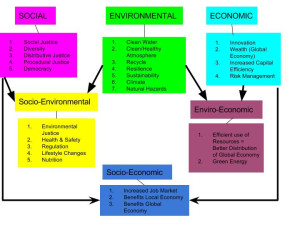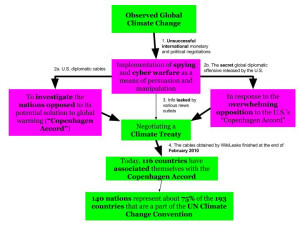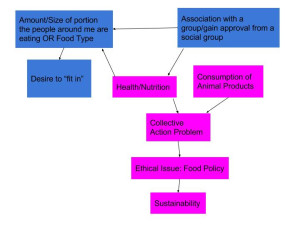- With the increasing rate of species extinction over the last several billion years, a closer examination of the multiple threats to biodiversity are required. Although this module looked at various threats to biodiversity, including growth of human populations, consumption levels, and mobility, it is important to note that the negative consequences stemming from human actions are normally unintentional. For the most part, the negative impacts are correlated with the human desire for an “increased quality of life”. After reading this module, choose two different threats to biodiversity that were discussed and provide a brief summary. In addition, provide outside research from at least one credible source for each.
- Invasive Species
An invasive species can be extremely hazardous as they eventually serve as a threat to the formerly established biodiversity in a particular area. The species that previously occupied an area are impacted by the introduction of a non-native animal, plant, or microbe. Such an invasive species usually does not go unnoticed. Often they introduce parasites to the native species, as well as prey upon them. In addition, an invasive species may hybridize with the native species, which leads to several complications leading to hybrid zones and reproductive barriers. Invasive species increase the competition for food as there are more individuals taking up a single area. Finally, an invasive species can introduce diseases leading to the modification and disruption of a habitat. In a February 2016 article, Stephen Carpenter described the ways in which invasive species represent a “largely unquantified threat to ecosystem services” (1). The impact of an invasive species is also evident in monetary terms. Carpenter has quantified that the degradation of an important ecosystem service, water clarity, caused by invasion of a water fly has led to some astounding costs. He found that the costs of restoring the service would be between 86.5-163 million dollars (1). The cost of restoring a habitat after it has been overwhelmed by an invasive species increases with an increasing environment as well.
- Pollution
Pollution is a term that is often used as a “catchall” label; however, there are concrete examples of the ways in which pollution serves as a threat to biodiversity. For example, the release of toxic synthetic chemicals and heavy metals into the environment has negative impacts on the resilience of a species. More often than not, such pollution harms the species and they end up on the endangered species list, or worse, extinction altogether. A common misconception is that a “natural” substance will not pollute an environment. However, even a natural substance will threaten the biodiversity in an area when it becomes increasingly abundant. A common example of this compromise is evident through the use of nitrogen and phosphorus for plant growth. These chemicals, when used in moderation, are harmless, but eventually they lead to pollution when used as fertilizers. Fertilizers can run off into water systems and lead to a “dead zone”. Carbon dioxide is another example of a “natural” substance that damages the atmosphere when released in abundant amounts by human activities and greenhouse gases. Bioaccumulation is another cause for concern when speaking about pollution because eventually, it threatens biodiversity. Bioaccumulation includes the process by which chemicals become increasingly concentrated in animal tissues as they move up the food chain. A recent study regarding the spread of bioaccumulation illustrated that concentrations of eleven elements were found in five marine species from different trophic levels of the food web. These trophic levels include algae, mussels, shrimp, and fish (2). The trophic levels listed are representative of species found in shallow coastal waters as well as species that serve an important role in the commercial food industry (2). So, just as bioaccumulation results due to increasing concentration in the food web, the impact of bioaccumulation on humans and their environment also increases as more and more species become affected by it.
2. A hazard is an extreme event that has a harmful impact on humans. Therefore, a human extinction hazard is an event leading to the extinction of humans. In this module, various human extinction hazards were discussed. Choose one human extinction hazard from the module and provide a brief summary. In addition, provide outside research from at least one credible source.
Nuclear Warfare
Nuclear warfare is an example of a human extinction hazard as it is a type of arms race, which includes a positive feedback loop. An example of the human extinction hazard stemming from nuclear warfare is the Cold War. The Cold War involved an arms race between the United States and the Soviet Union, which lead to worldwide destruction. Although the Cold War is an event of the past, many of the weapons used still exist and other countries around the world show great interest in pursuing the potential use of nuclear weapons. Nuclear warfare would lead to global destruction and a period of darkness where there is little to no sunlight present. This is known as a “nuclear winter”. The concept of a nuclear winter is obviously frightening to society, so scientists have done much research on this global atmospheric and climate consequence by using models of volcanic eruptions (3). The research has shown that the possible scenarios resulting from nuclear warfare are very serious and widespread. In an article from Science Magazine, scientists have noted that, “Large horizontal and vertical temperature gradients caused by absorption of sunlight in smoke and dust clouds may greatly accelerate the transport of particles and radioactivity from the Northern Hemisphere to the Southern Hemisphere.” (3). In addition, scientists hypothesize global destruction caused by the nuclear blast, rapid spread of fires, and initial loss followed by increased solar ultraviolet radiation due to ozone depletion (3). Overall, the probable human exposure to cold, dark, and radioactivity is a very real situation that will threaten mankind as a result of bioaccumulation that ultimately leads to a nuclear winter (3).
- In reading through all ten modules from this semester, it is clear that many complex interactions between humans and their environment have an impact on sustainability and biodiversity. Make a systems diagram that illustrates these relationships in regards to sustainability and biodiversity. Include at least three components, from any of the modules this semester, which flow in a logical order.




